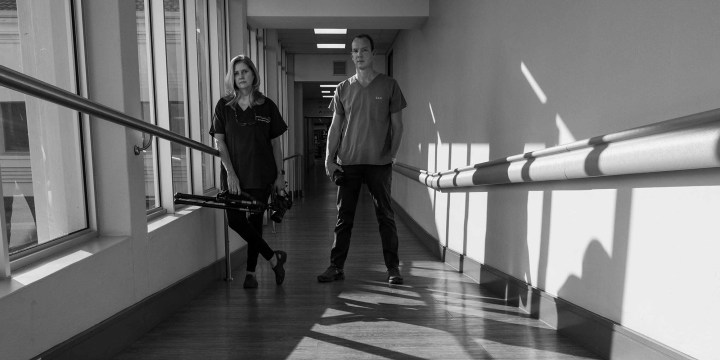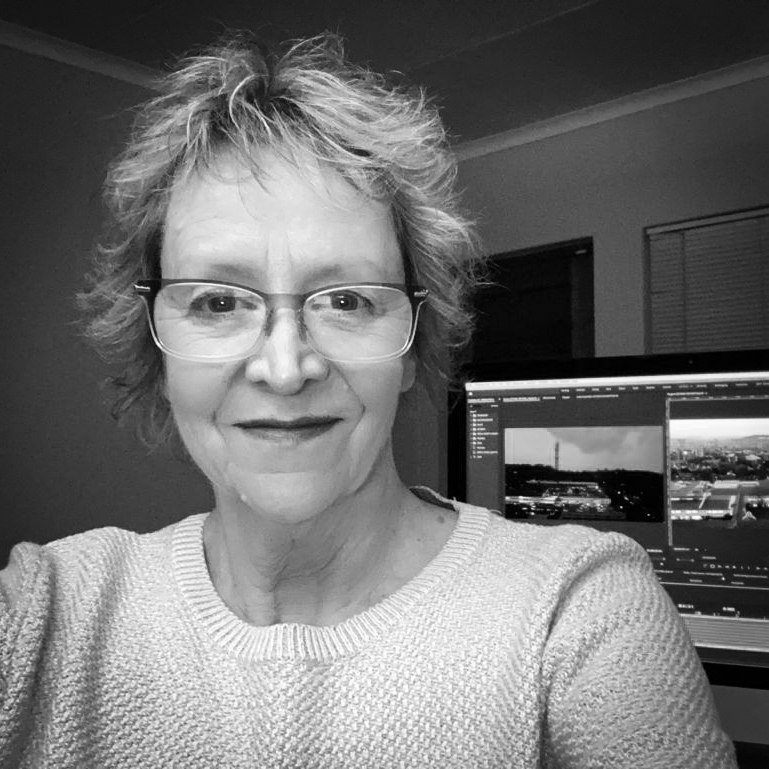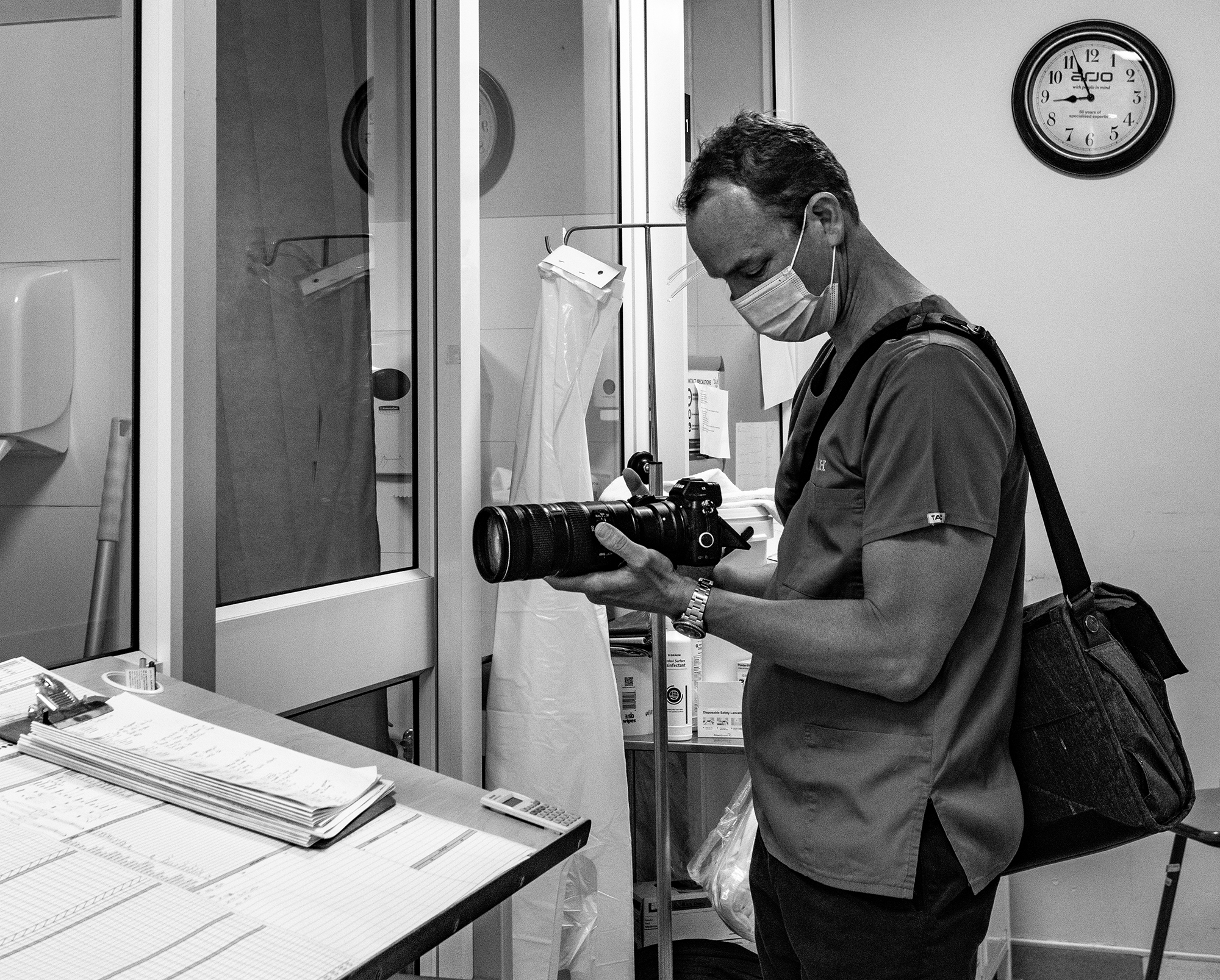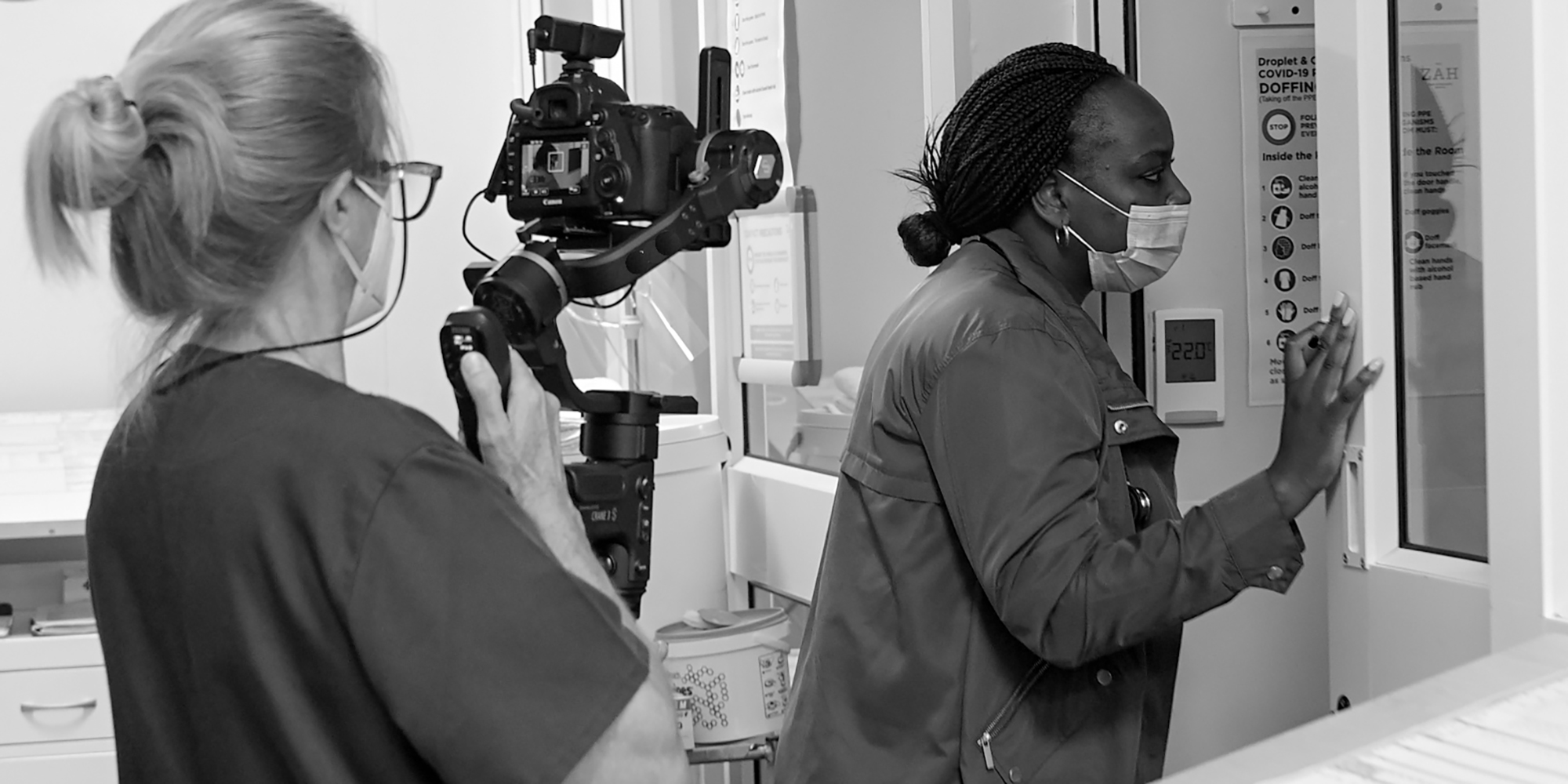OP-ED
Zero to Zero: Documenting the Covid-19 war from the hospital frontline

A new documentary that tracks the impact of Covid-19 in one private hospital in South Africa will be screened locally in early October. David Gemmell chatted to radiologist and videographer Leonie Scholtz about how the documentary came about.
David Gemmell has variously been a barman, labourer, truck driver, roughneck, trader, project manager and is now a full-time writer. He is the author of the biography of Joost van der Westhuizen, Joost: The Man in the Mirror. He recently completed a biography on Father Stan Brennan, Colour Blind Faith.
First let me start by telling you about my friend, John “Chick” Legh. He and I rode a number of Argus cycle tours, ran the Comrades, did the Duzi Marathon in a double canoe and swam the Midmar Mile. We also went on cricket tour to England, played Sunday social soccer and squash, (badly) for some lower league side. I was the best man at his wedding and he at mine. People this close to you become an integral part of your life, and, because of our innate tendency to live as if we are immortal, we simply never envisage them dying.
In November, Chick got Covid. He ended up in Groote Schuur, on a ventilator. Sadly, he didn’t come out. Up until then, to me the virus was nothing more than a major irritation; an inconvenience. The pandemic was something I just never took seriously. The world was overreacting a tad, I thought.
Chick’s death changed all that. Suddenly the problem was very real and on my doorstep. If it could take him out I certainly wasn’t safe. Nowhere is this simple inference better amplified than in the documentary Zero to Zero, to be shown on M-Net, on 4 October at 8.30pm.
No doubt because she is a professor (of radiology), hobbyist filmmaker Professor Leonie Scholtz had a more subdued, considered take on Covid-19, than I did. Before it was even pronounced a pandemic, she applied to the Zuid-Afrikaans Hospital in Pretoria, where she has a practice, for permission to film and record in the frontline.
For 15 months she and her two partners, editor Christa Lategan and photographer Shem Compion, filmed patients and healthcare workers for up to 12 hours a day in the wards, operating theatres, ICU, homes of patients, and anywhere else they encountered the effects of Covid-19. Scholtz and Compion transferred the footage to Lategan daily. The footage was extensive and the editing took months. In so doing they created an absorbing, terrifying, but ultimately uplifting documentary. It is also a serious tearjerker.
The film is about the effect of the pandemic on patients, families, health workers, doctors, specialists and hospital staff. Because of a dearth of frontline publicity many people still believe the Covid-19 situation has been exaggerated. This movie comprehensively dispels that myth.
What made you think so early on, Covid-19 was going to be such a disaster, I asked Scholtz.
“When the virus started, we immediately realised it was highly infectious. Of course, before it hit us, it hit Europe. I spoke to my friends in the London hospitals, and they said, ‘We are going through hell here.’ We also saw the ominous warning signs on TV. The medical people knew it was going to get here, because with what was happening in the rest of the world there was no way we could have been excluded,” she said.
Months before the pandemic struck, Scholtz had held a photographic exhibition of her work in Johannesburg.
“I’ve always been interested in the merging of imaging on the medical side, with imaging in art. So with that exhibition in mind, I thought the virus was a topic I should document.”
She started with still photography. “Once I started and patients were admitted, with all the masks and stuff the environment became surreal very quickly. I realised, to properly record what was going on, I had to record it on video.”
She sought permission from management to film everywhere in the hospital. Initially Scholtz thought she would make something only for internal consumption, “Just something for us to remember.” But as the situation became increasingly dire and she saw programmes and news on the BBC and out of the US and Europe she realised there was nothing focusing on our own situation. And it was getting worse.
“You know, we’ve got records of all the world wars, the trenches, the Holocaust and now this was the new frontline. Who was going to record this? Who was going to show the public outside, or the people who thought Covid-19 was a hoax or just ‘bad flu’? What’s more, on X-rays we were seeing stuff we’d never seen before. So that’s why I started and that is why I asked Shem and Christa to join me.”
Until then Scholtz had been a hobbyist making personal videos for herself.
“This is my first real commercial production. I’ve done some video work, but just personal stuff. Shem did a bit of video work with David Attenborough, but we are both essentially still photographers, so we were relative rookies, although we understood the technology.
“It was a sharp learning curve. I had to learn how to use a gimbal effectively, I had to buy sound equipment, and you won’t believe the size of the equipment we used. We got unbelievable sound out of it, even though it was so tiny and compact, because, of course, we couldn’t take huge equipment into the wards and theatres.
“But for Shem and myself, it’s our first documentary. The principles are the same, more or less, regarding the lighting and stuff. However, there is a total difference as well. For instance, with still photography there’s one angle, but with video there’s always a lot of angles. I learned a lot about angles,” she laughs.
Did the hospital ever raise concerns or reconsider their permission as the situation worsened so overwhelmingly, so quickly? I ask.
“I’ve worked there for many years and I have a good relationship with the management. Also, they are always ethical in their dealing with patients and they trusted me, so, for instance, they never feared prosecution or legal problems.
“Oddly, my biggest dilemma was with Shem. Early on, I realised I was going to have to take him into the ICU to film. He has two young kids and I was now wanting to take him into a contaminated environment. Fortunately, Shem’s response to my concerns was, ‘Leonie, don’t worry, of course I have to go in with you.’ ”
Scholtz explains how making the film affected the team.
“In the first wave we were all so scared, but we were also on an adrenaline rush. We prepared, even though we feared what was going to happen. Were we going to get infected or were we going to infect our families? It was a strange time.
“Then it briefly got a bit better. We anticipated it was going to take about three to six months to complete the movie, but before we stopped the second wave came. It made the healthcare workers very tired, although they did what they had to. When the third wave came people became silent. They were literally dumbstruck.
“They didn’t talk and that is when I got emotionally tired. Eventually, even though I had to do some filming, I actually struggled to go in, because the trauma was too much. The pain was too much, and the death… there were people dying every day. So emotionally, it got much worse with each wave. That took a toll on the staff. And it is also when some of us started to develop post-traumatic stress. That will occur more and more, and it will get worse. It’s finished [the documentary], but if I had to go back and film some more for whatever reason, I don’t think I could.”
The impact of the pandemic also became personal for Scholtz.
“I lost two very close colleagues and my one partner became very ill. He got very sick and that affected me, because he had no comorbidities, but he really was very sick. I visited him regularly because I was in the ICU every day… [T]hat affected me a lot. It was not good to see… when suddenly one of your partners who you work with every day is in ICU, short of breath and struggling – it is too awful for words. He was alone and I knew his family wasn’t there. To see the impact on him was very real and very distressing.”
Scholtz says the impact of the pandemic on care for patients with other conditions has been significant.
“People don’t always realise, but the collateral damage is huge. What happened initially, when the first patients got admitted, was people didn’t want to come to hospitals. They were scared because hospitals were full of Covid-19. People who had elective problems – like they had to get a knee replacement or they had to have a back op – they rather suffered with their back pain at home. Then, as the hospitals got inundated with Covid-19 patients, the elective cases stopped completely. And because initially we didn’t scan many Covid-19 patients, our work all but disappeared. “Financially, a lot of doctors struggled. But then we started scanning patients to see how bad their Covid-19 infection was. So there was that, and the elective stuff increased a bit – but it hasn’t gone back to normal yet. Now we are seeing ‘neglected’ pathology – where people didn’t come in and suffered complications at home. The collateral damage has been serious.”
Although we have been inundated with Covid-19 statistics and there is a flood of opinion both in favour of and against vaccinations, we have not had direct access to many visuals from the South African frontline of the pandemic. This documentary takes you into the heart of one facility where staff and patients have faced a relentless challenge over more than a year – and into the lives of the people trying to get through it. DM
Zero to Zero will be shown on M-Net at 8.30pm on 4 October 2021.
"Information pertaining to Covid-19, vaccines, how to control the spread of the virus and potential treatments is ever-changing. Under the South African Disaster Management Act Regulation 11(5)(c) it is prohibited to publish information through any medium with the intention to deceive people on government measures to address COVID-19. We are therefore disabling the comment section on this article in order to protect both the commenting member and ourselves from potential liability. Should you have additional information that you think we should know, please email [email protected]"







 Become an Insider
Become an Insider